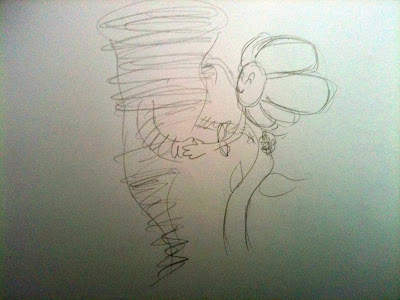So in this exercise, random words were given by the lecturer, and I have to pick 3 pairs of words (based on the numerical order). I picked 13, 09 and 87. And this is what i got.
STEP 1 : GET RANDOM PAIRS OF WORDS
EXERCISE 1
"Create a sentence using the two random words
1. ………………… flower…………………..spider
e.g; My red flower got eaten by a huge spider "
So that means i have to make 3 sentences? Right. Here goes.
Eh wait. oil from palm, not from the tree kan? Okay. confused.STEP 1 : GET RANDOM PAIRS OF WORDS
- Flower & Wind
- Fly & Rain
- Oil & Tree
EXERCISE 1
"Create a sentence using the two random words
1. ………………… flower…………………..spider
e.g; My red flower got eaten by a huge spider "
So that means i have to make 3 sentences? Right. Here goes.
- The flower in the garden dances beautifully with the wind.
- The fly hid in under the leaf when the rain is pouring.
- We can get oil from palm tree.
Okay next exercise is :
EXERCISE 2
Well. They gave me an image of a spider eating the flower. I assume that I need to illustrate the sentences that I made earlier.
Here goes :
That's...uhh... a flower dancing with a tornado. represents the wind.... k next.
Now that's a cute fly, hiding under a leaf. from the rain.
.......that...is a palm tree. that can produce oil...kot.
Ouch. My head hurts. I shall continue later after a good nap.




